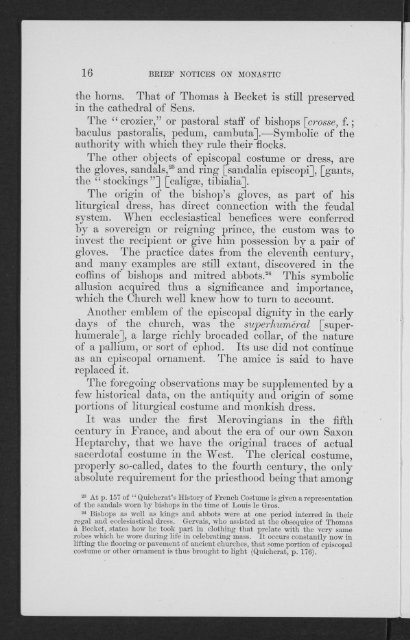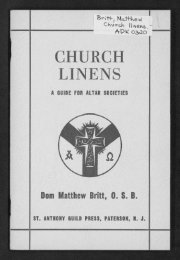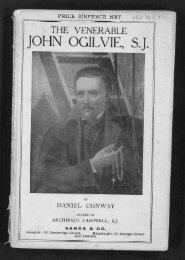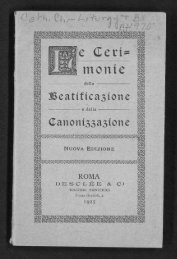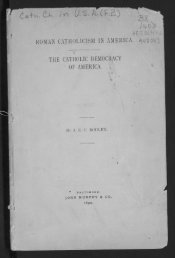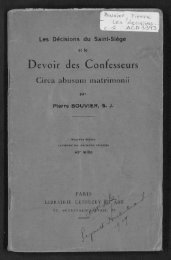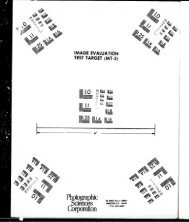MONASTIC AND ECCLESIASTICAL. COSTUME.
MONASTIC AND ECCLESIASTICAL. COSTUME.
MONASTIC AND ECCLESIASTICAL. COSTUME.
You also want an ePaper? Increase the reach of your titles
YUMPU automatically turns print PDFs into web optimized ePapers that Google loves.
16 BBIEF NOTICES ON <strong>MONASTIC</strong><br />
the horns. That of Thomas k Becket is still preserved<br />
in the cathedral of Sens.<br />
The " crozier," or pastoral staff of bishops [crosse, f.;<br />
baculus pastoralis, pedum, cambuta],—Symbolic of the<br />
authority with which they rule their flocks.<br />
The other objects of episcopal costume or dress, are<br />
the gloves, sandals, 28 and ring [sandalia episcopi], [gants,<br />
the "stockings"] [caligse, tibialia].<br />
The origin of the bishop's gloves, as part of his<br />
liturgical dress, has direct connection with the feudal<br />
system. When ecclesiastical benefices were conferred<br />
by a sovereign or reigning prince, the custom was to<br />
invest the recipient or give him possession by a pair of<br />
gloves. The practice dates from the eleventh century,<br />
and many examples are still extant, discovered in the<br />
coffins of bishops and mitred abbots. 24 This symbolic<br />
allusion acquired thus a significance and importance,<br />
which the Church well knew how to turn to account.<br />
Another emblem of the episcopal dignity in the early<br />
days of the church, was the superhumeral [superhumerale],<br />
a large richly brocaded collar, of the nature<br />
of a pallium, or sort of ephod. Its use did not continue<br />
as an episcopal ornament. The amice is said to have<br />
replaced it.<br />
The foregoing observations may be supplemented by a<br />
few historical data, on the antiquity and origin of some<br />
portions of liturgical costume and monkish dress.<br />
It was under the first Merovingians in the fifth<br />
century in France, and about the era of our own Saxon<br />
Heptarchy, that we have the original traces of actual<br />
sacerdotal costume in the West. The clerical costume,<br />
properly so-called, dates to the fourth century, the only<br />
absolute requirement for the priesthood being that among<br />
33 At p. 157 of " Quicherat's History of French Costume is given a representation<br />
of the sandals worn by bishops in the time of Louis le Gros.<br />
2 1 Bishops as well as kings and abbots were at one period interred in their<br />
regal and ecclesiastical dress. Gervais, who assisted at the obsequies of Thomas<br />
a Becket, states how he took part in clothing that prelate with the very same<br />
robes which he wore during life in celebrating mass. It occurs constantly now in<br />
lifting the flooring or pavement of ancient churches, that some portion of episcopal<br />
costume or other ornament is thus brought to light (Quicherat, p. 176).


